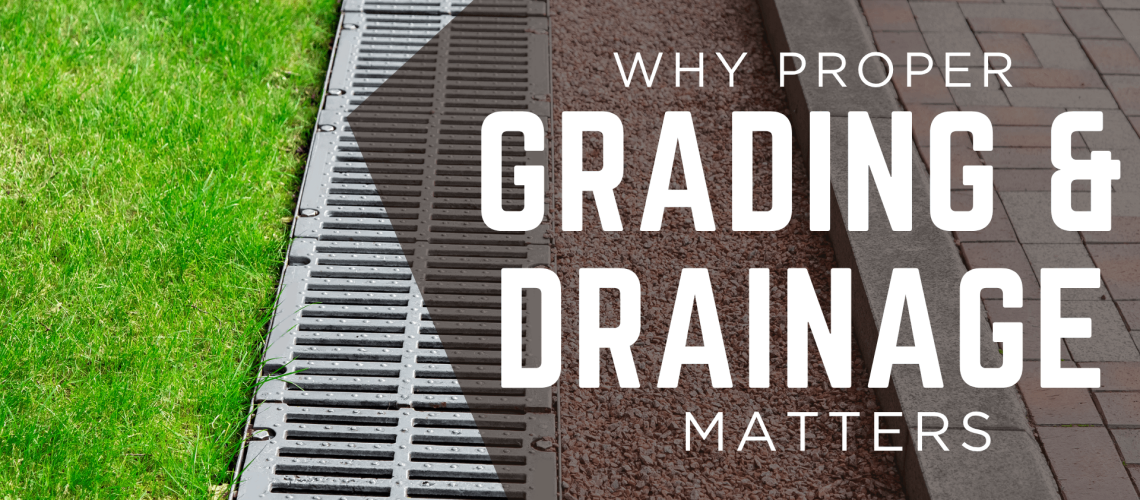A solid foundation is only as strong as the ground and water management around it. In Somerville, Tennessee, where heavy rains and clay-rich soils are the norm, proper grading and drainage aren’t just nice to have — they’re essential. Even the best-built home can experience cracking, shifting, or moisture intrusion if the land around it isn’t directing water where it belongs.
As a professional home inspector serving Somerville and the surrounding West Tennessee communities, I see foundation drainage issues on nearly every inspection. Some are subtle — a slightly sunken flowerbed or a misdirected downspout — while others are major, such as standing water near crawlspace vents or erosion that exposes the base of the footing.
Here’s what every homeowner should know about keeping foundation drainage under control and preventing long-term damage.
Understanding How Water Affects Tennessee Foundations
The soils in Fayette County are predominantly clay — dense, moisture-sensitive, and prone to expansion and contraction with changing weather. After periods of heavy rain, the clay swells, pressing against foundation walls and footings. When it dries out, it contracts, leaving small voids that allow further movement the next time it rains.
This cycle repeats season after season, causing cracks, uneven floors, or doors that no longer close smoothly. Good grading and drainage reduce the amount of water that reaches the foundation in the first place, keeping soil conditions more stable.
Slope and Grading — Your First Line of Defense
The ground around your home should always slope away from the foundation — ideally about six inches of drop over the first ten feet. That gentle slope ensures that rainwater flows outward, not inward.
In Somerville neighborhoods, it’s common to find homes where landscaping or soil settling has gradually reversed this slope. Flowerbeds and mulch piled against siding can hold moisture right where you don’t want it. Even new construction can develop poor grading as the soil compacts naturally after a year or two.
A quick test: after a heavy rain, walk the perimeter of your home. If you see puddles lingering near the base or areas where water seems to “hug” the foundation, it’s time to regrade those spots.
The Role of Gutters and Downspouts
A properly sloped yard won’t help much if the roof drainage system isn’t doing its job. Gutters catch thousands of gallons of rainwater during a storm — and if they’re clogged, undersized, or missing extensions, that water goes straight to the foundation.
During inspections, I often see downspouts that stop just inches from the home’s edge. That’s an open invitation for moisture problems. Extensions should discharge water at least four to six feet away from the structure, ideally onto a splash block or drainage swale that continues to guide it downhill.
Regular gutter cleaning, especially before spring and fall storm seasons, is one of the simplest maintenance tasks that can prevent foundation damage altogether.
Crawlspace Drainage and Moisture Control
Many homes in Somerville are built on crawlspace foundations, which makes water management even more critical. Moisture that seeps through the soil or enters through vents can raise humidity under the house, leading to wood decay, fungal growth, and even structural weakening over time.
A properly installed vapor barrier, combined with adequate grading outside, can drastically reduce these risks. In particularly damp areas, a French drain or sump pump system may be needed to move water away from the perimeter.
During inspections, I always check for signs of moisture intrusion — discolored joists, musty odors, or rusted metal components. These are early warnings that the drainage system isn’t performing as it should.
Managing Roof Runoff and Hard Surfaces
Modern homes often include driveways, patios, or walkways that unintentionally channel water toward the house. It’s easy to overlook how concrete and paving affect natural drainage. Even small slopes toward the home can direct water exactly where you don’t want it.
If you notice water pooling near the garage or front steps after storms, consider adding trench drains, channel drains, or re-sloping those surfaces. The key is ensuring every hard surface sends water away from the home — not toward it.
Signs of Existing Drainage Problems
Not sure whether your home already has a drainage issue? These warning signs are worth noting:
- Cracks in foundation walls or floors that widen over time
- Gaps between exterior brick and trim
- Efflorescence (white mineral deposits) on crawlspace walls
- Persistent musty odors under the home
- Water pooling within five feet of the foundation
- Downspouts or gutters overflowing during rain
If you see one or more of these symptoms, it doesn’t always mean major repairs are needed — but it does mean the system needs attention before it gets worse.
Preventive Maintenance Saves Thousands
Most drainage fixes are simple: clean gutters, add extensions, and maintain proper slope. Yet, I often see homes where years of neglect have led to cracked foundations, rotten sill plates, and severe crawlspace moisture.
Routine maintenance, a keen eye for water movement, and professional inspections can make all the difference. Addressing grading and drainage issues early not only extends the life of your foundation but also protects flooring, walls, and finishes inside the home.
📞 Schedule Your Somerville Home Inspection Today
Serving Somerville, Oakland, and surrounding West Tennessee communities, Upchurch Inspection provides certified home inspections, foundation assessments, and specialized testing for mold, radon, water quality, and sewer systems.
📞 Call (901) 350-8885 or visit UpchurchInspection.com to schedule your inspection today.


